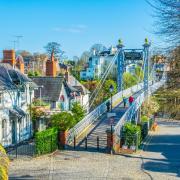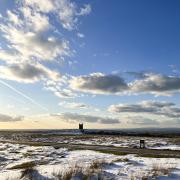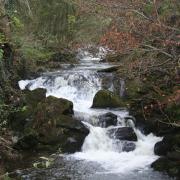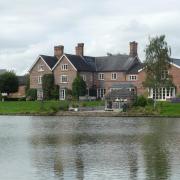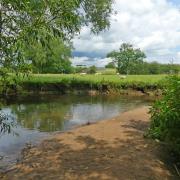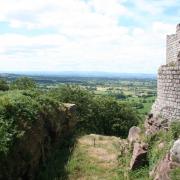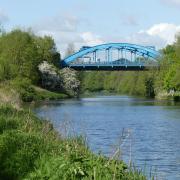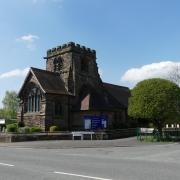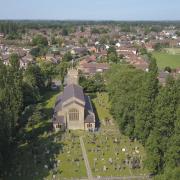Keith Carter describes a favourite walk around Chester which follows the river and takes in some historic sites
For many visitors to Chester their first option for a walk would be the one round the walls and indeed I described this in an earlier issue of Cheshire Life. Much as I like this excursion into the beating heart of Chester, I decided to look for a walk that left the city behind and explored what was to be found by following the river upstream.
I love walking beside water for the variety of impressions that go with it, from boats to wildlife, to the people who get their enjoyment or livelihood from it. One of the attractions is the bridges that cross the river and I have remarked before on how bridges impose an intriguing mark on the life of the river, nowhere more evident than in Chester where there are several to enjoy.
The Old Dee Bridge is one example, a classic of its kind with three arches built in the sandstone that is characteristic of the city’s architecture. The Romans chose the same place for their river crossing and we can imagine a succession of people, tradesmen, townsfolk and armies crossing it through the centuries.
1 Our walk begins close to this bridge although the nearest we can find to park is at Queen’s Park High School which enterprisingly offers all-day parking at weekends and school holidays for only �3 a day.
Walk back along Queens Park View and cross over at the T-junction to a footpath immediately opposite where a signpost indicates the Suspension Bridge and The Meadows. Take this and proceed to the river bank, turning along it to the right with the river on our left. We pass under the Queens Park Suspension Bridge which was built to give the inhabitants of the Queens Park development easy access to the city centre.
2 When the footpath meets a metal gate beside two notice boards we enter Earl’s Eye Meadows and we continue forward on the riverside path for the next two miles.
When researching this walk with my staunch companion Jim we came across the dead body of a gannet, an unlikely visitor to the River Dee at Chester. These birds are usually to be seen offshore, interrupting their flight by plunging like a stone to catch fish with their spear-like beak. How it got here was a mystery. On the river rowers of variable ability were active, their craft looking ungainly in unskilled hands until an eight came effortlessly past showing how easy it was.
We leave the city behind as the river curves dramatically south, the houses on the far bank giving way to thick groves of willow. We pass the blighted trunks of willows from an earlier generation and notice a jetty on the bank used by a passenger ferry that operates at holiday times and at weekends.
3 Soon we leave Earl’s Eye Meadows and find ourselves in meadows interspersed with occasional kissing gates, the area much frequented by joggers and dog walkers. On reaching a pumping station we next meet a gate where a path goes right to meet Eaton Road where we turn right then cross over to an opening in the opposite hedge. Although not officially a right of way, this path is used freely by local people to link with Dukes Drive, the path named on the map as Eaton Approach. This straight drive was built for the then Duke of Westminster to enable him to connect from Eaton Hall to Chester centre. We use it for the same purpose after joining it at a milestone with the inscription PEM 1857.
The Dukes Drive provides a level easy stroll back to the city through shady woodland where we discovered two tree workers cutting down a diseased sweet chestnut. Jim expressed interest in the firewood and the woodcutter said he could have all he could carry.
4 On reaching a crossroad with another path turn right and we join a lane that leads past the Catholic High School to a T-junction where we turn right and take Brown’s Lane nearly opposite. At the end of this go right at the crescent and then left to look for a concealed path beside a street sign saying Westminster Terrace. Steps lead down to a field heavily infested with ragwort and emerge onto cobbles by the entrance to Edgar’s Field Park. Go into the park and keep left along the wall beside the river as far as a play area where we join the road. To regain the car, turn right then left at the lights and then right into Queens Park View.
5 To get into the city, turn left and cross the Old Dee Bridge where, just through the arch of Bridgegate we find the ancient Bear and Billet pub. Dating back to 1664 this wonderful timbered building with mullioned windows was built for the Earl of Shrewsbury who was keeper of the gate. It is one of the historic landmarks of Chester and well worth a closer look.
I recall reading about a visit to Chester which the traveller George Borrow made in 1854 when he stayed in lodgings in Northgate. On ordering ale and cheese he found both so disgusting that he spat them out of the window into the street. I worried that Jim was about to do the same when served a cloudy pint of a beer that had better remain nameless.
This is a lovely walk, which would suit most levels of ability and adds a new view of Chester to those who don’t stray far from the city walls.
The print version of this article appeared in the October 2011 issue of Cheshire Life
We can deliver a copy direct to your door – order online here





